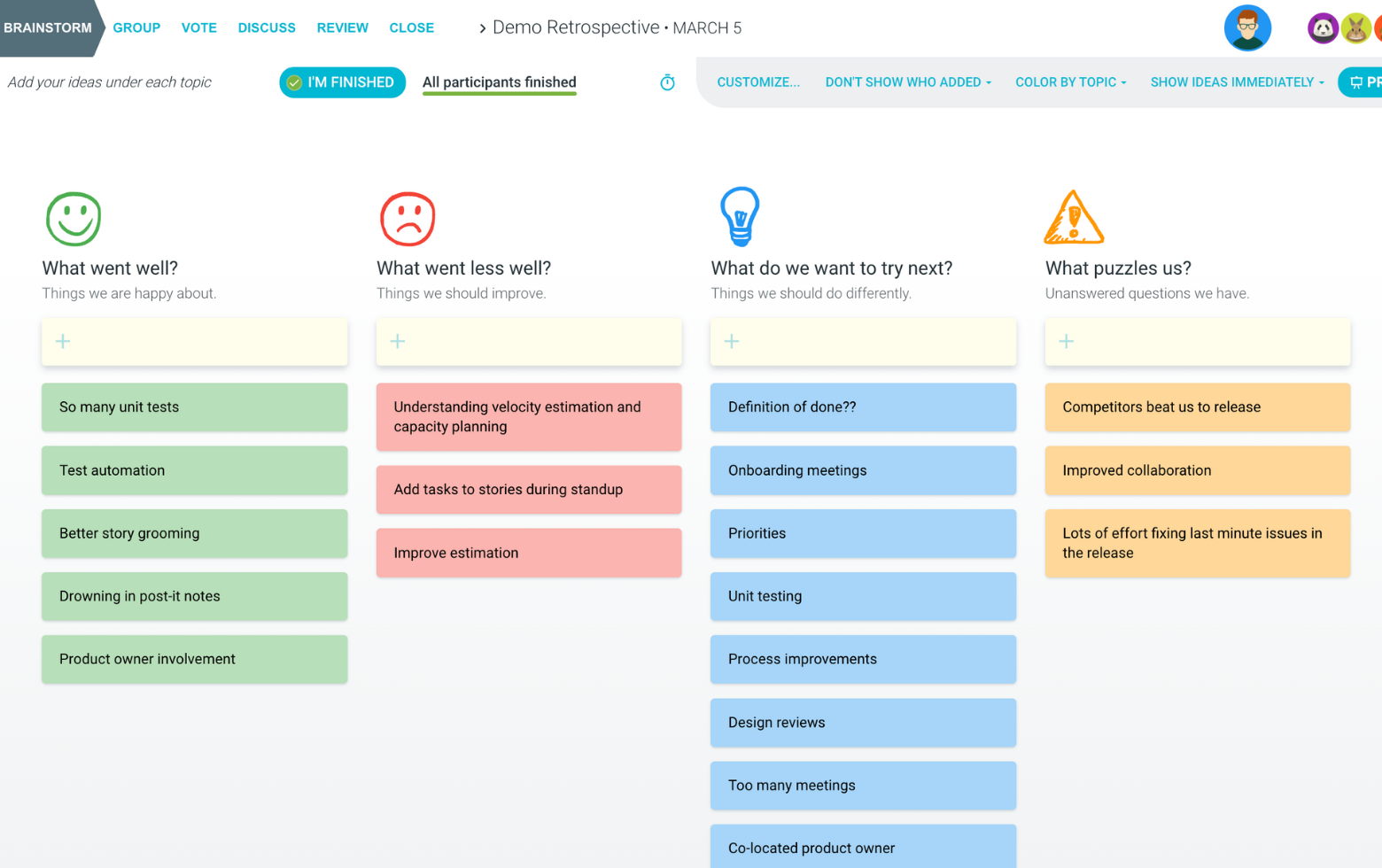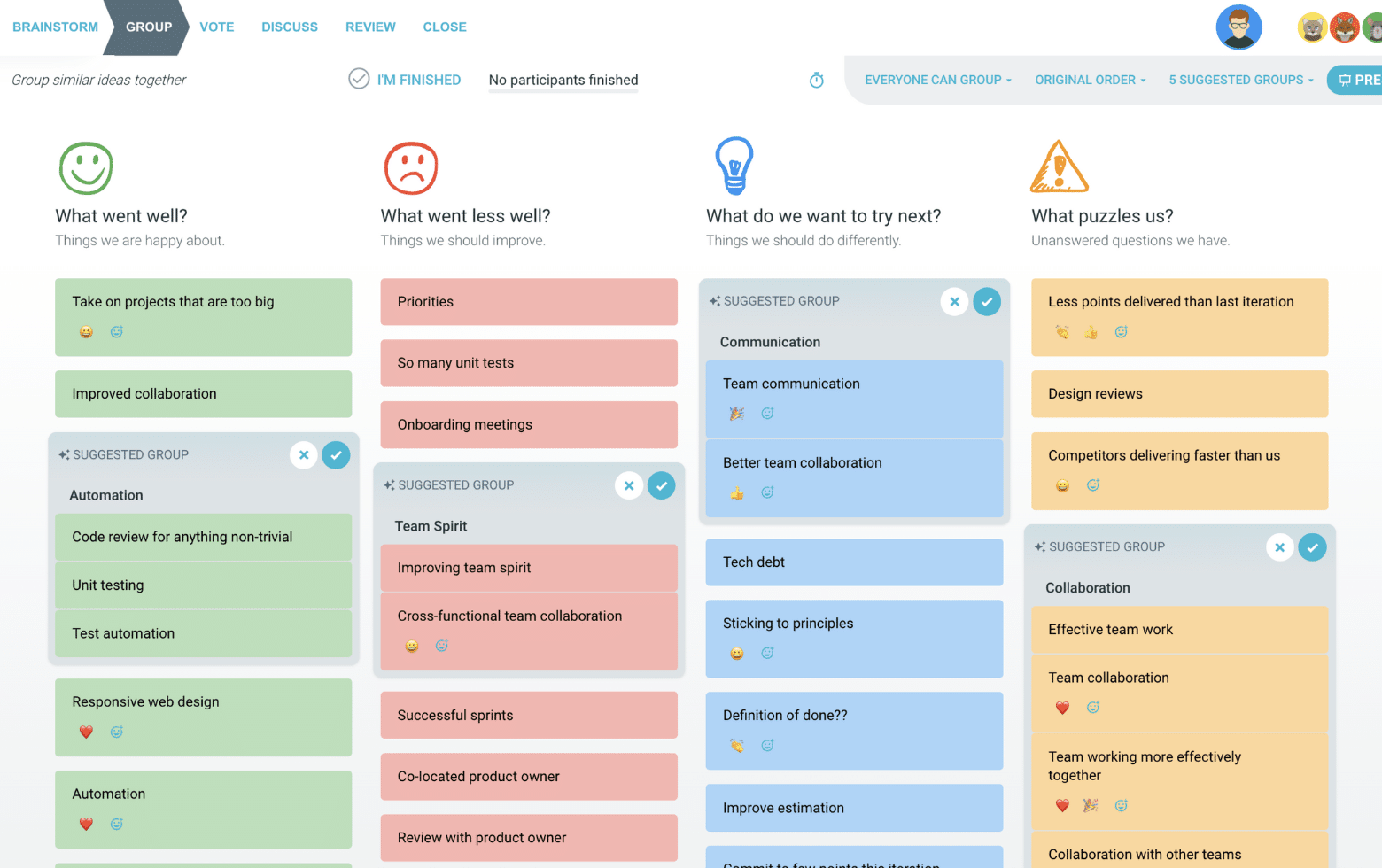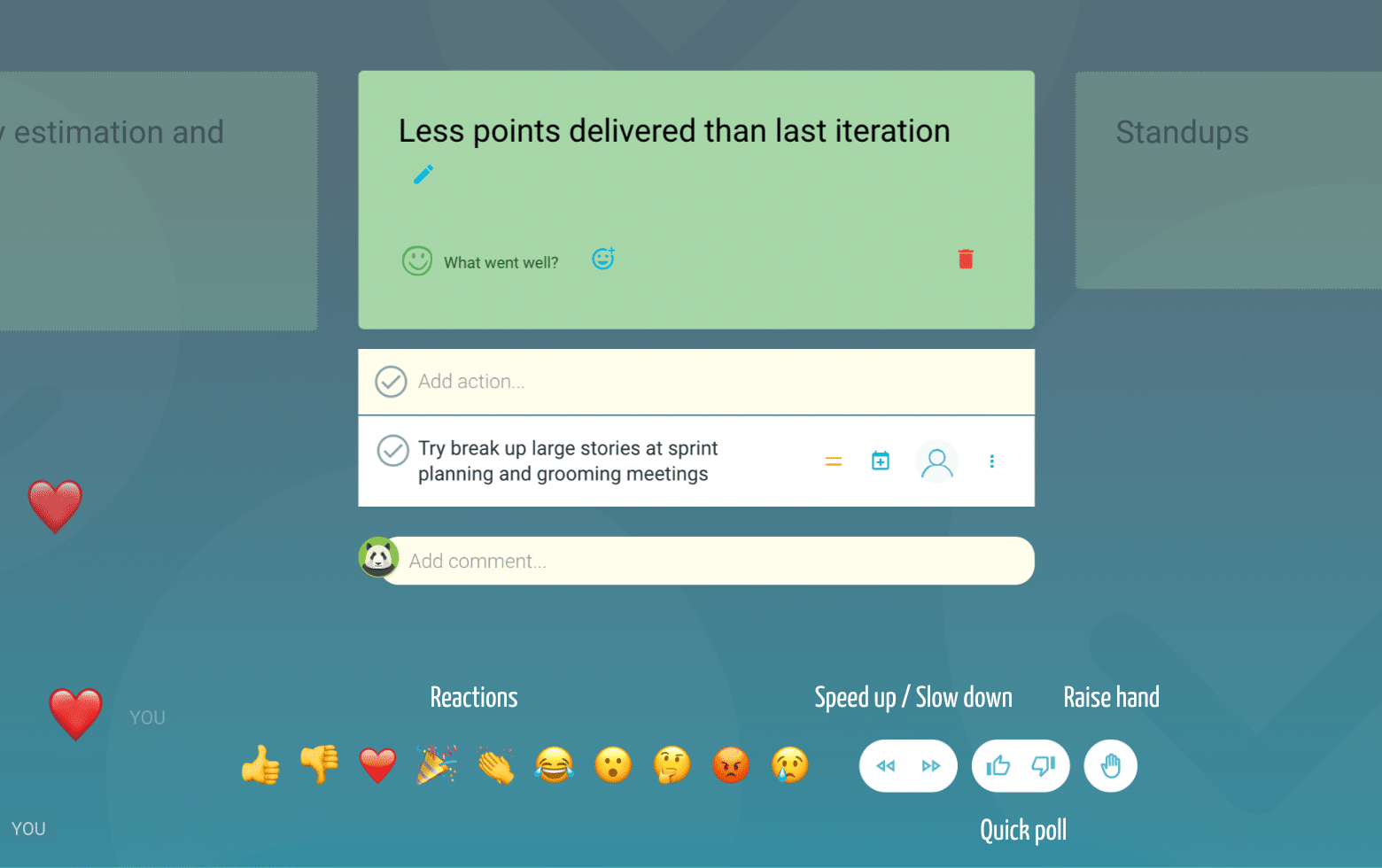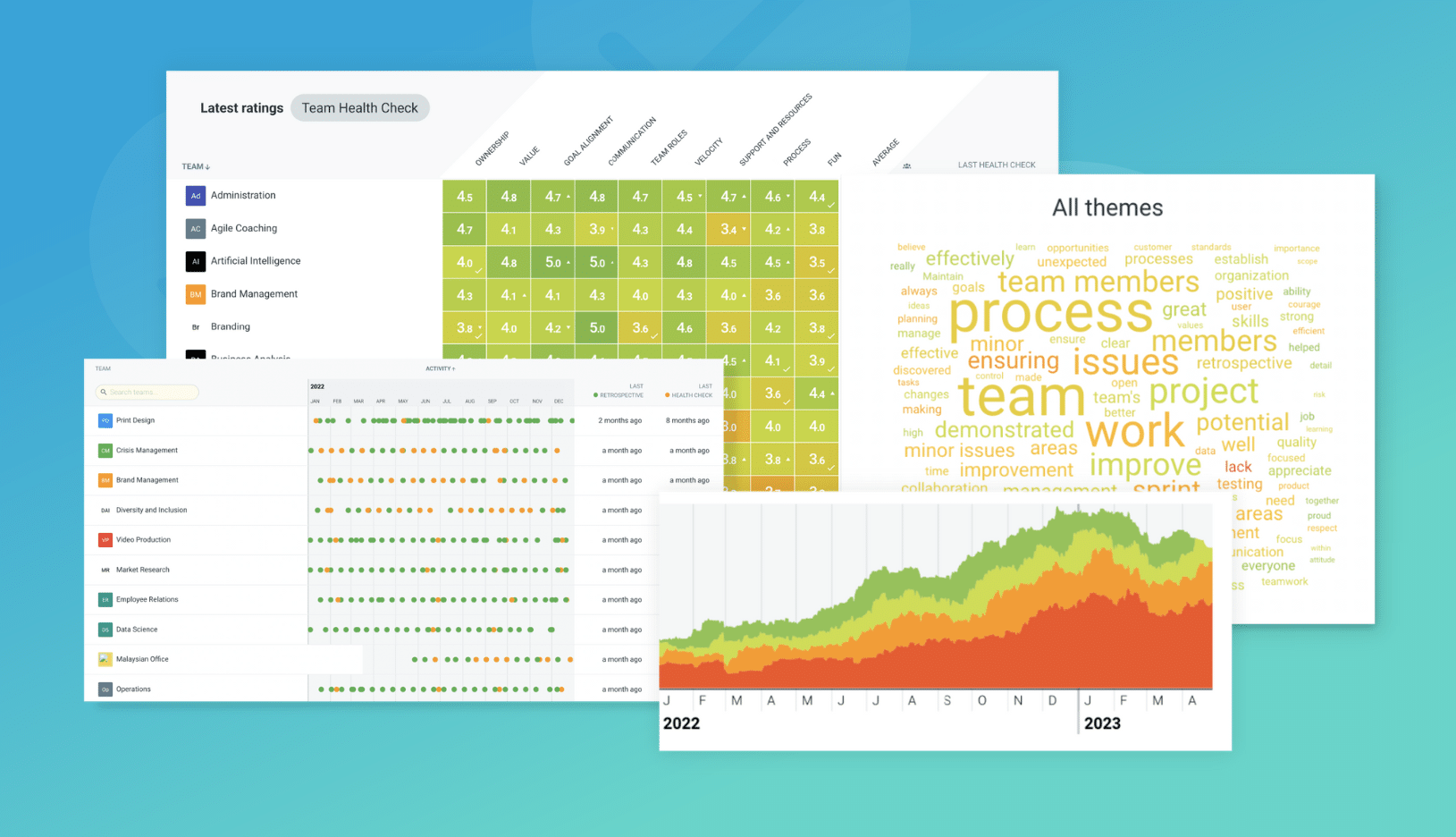What is a DAKI retrospective?
A DAKI retrospective helps you identify specific features, behaviors or activities that people in your project team think they should Drop, Add, Keep or Improve. This type of retrospective identifies differences in perceived values of each person in the team. It is a great way to re-energize the team and to gain new insights by having the team question the value from current practices and to refine them.
The DAKI retrospective format
Drop
Add
As new challenges arise during the course of the project, innovation is required to overcome this. These are things that the team now believe should be added to what they do to replace the things that have been dropped. This may be something technical, a process, a resource or even a new process.
Keep
Improve
Finally, there might be some activities that are already happening, but with a little tweak could increase its impact. This is a space for incremental changes and evolution to refine the way the team works.
This style of retrospective can be used to refine product features through to communication patterns within the team. You can use the topics as themes, as opposed to being too narrow in terms of its focus.

Suggested icebreaker questions for Drop Add Keep Remove retrospective
- What have you held on to, even though you can’t remember the last time you used it?
- What do you regret giving away?
- What’s something that you’ve noticed has been changed for the better?
Retro Rehearsal
Invite your team to rehearse the retro referencing something they can eat.
For example, if a standard burger had, a patty, lettuce, sauce, and onions in a bun, what would you drop, add, keep, remove to move it closer to your ideal burger?
Ideas and tips for your DAKI retrospectives
-
Ask each person in the team what they thought was the best change that happened to a product or service that they had experienced in the past. e.g. the lid of tomato sauce so that it stands on it’s head, additional customisable songs to the PS4 Beat Sabre on PC or being able to propose and capture team health.
-
Use the concepts of brain writing – give people “silent time” to write, read and respond to each topic. You can even open up your retrospective before your meeting to allow people to add ideas and concepts prior to the meeting.
-
Use the way teams vote to manage culture. You’ll get interesting insights when people add ideas and votes. Too much in the drop column may indicate an over zealous scope.
Too much in the keep and nothing in the add or improve columns signals a need for innovation or creativity.
-
Introduce any constraints that might impact on the decision only after the initial brainstorm, but try not to be limited solely by this as it will drain the energy of the team.
-
A good way to close this retrospective is to ask the question. If we made all these changes to drop, add, keep or improve our product or service, how does this impact our overall work, value to the customer or an organisational KPI.
-
A thank you can go along way in this retrospective format. It can take courage to put new ideas forward or challenge the status quo, so make sure to acknowledge everyone’s ideas and contributions .
How to run a DAKI retrospective in TeamRetro
Start Your Session in a Click
Log into TeamRetro and choose your template. Customise questions and the workflow to create your perfect retro for your team.
Create Your Team Easily – No Separate Accounts Needed
Brainstorm Individually – Free From Bias
Smart Grouping for Faster Insights
Fair, Flexible, and Fast Voting
Engage, React, and Capture Key Insights
Walk your team through ideas one by one with Presentation Mode. Stay in sync, spark real-time discussions, and capture feedback with comments, live reactions, and polls—all in one place.
Turn Ideas Into Action
Propose next steps with team buy-in, get AI-powered action suggestions, and keep everything in one place. Committed actions sync to your personal dashboard and integrate with your workflow tools—keeping you on track.
Save, Share, and Stay on Track
Get quick AI-powered summaries, add facilitator notes, and store retrospectives in your library for easy access. Schedule your next session and track published actions to keep your team accountable at the next retro.
Turn Team Data into Actionable Insights
Uncover trends, common themes, and key engagement metrics at a glance. Track sentiment shifts, analyze conversations, and monitor completed actions to drive continuous improvement.








